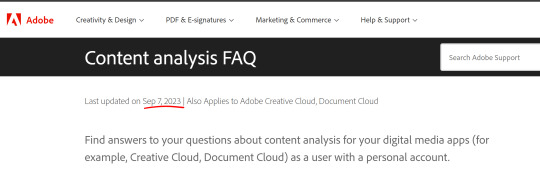#content analysis
Explore tagged Tumblr posts
Text
I'm doing a Personal Interest Project on the Manic Pixie Dream Girl trope and it's impacts on neuro divergent and mentally ill people, especially women. I'm looking at how the depiction of MPDGs is inherently based on neuro divergent and mentally ill women and the ways in which this impacts how we are then viewed and view ourselves because of this. I'm also looking at how this then impacts relationships and thus society as a whole. I need as many responses as possible to my questionnaire as a form of primary social research so if anyone could fill this out it would be massively helpful, you don't have to fall under the group I'm researching either I just need general data. Due to a document error one question does appear twice, just write see prior answer.
#manic pixie dream girl#film#society and culture#school#social studies#education#school project#survey#questionnaire#neurodivergence#autism#adhd#mental illness#women#feminist theory#scott pilgrim vs the world#ramona flowers#500 days of summer#summer finn#almost famous#penny lane#clementine kruczynski#eternal sunshine of the spotless mind#john green#paper towns#looking for alaska#alaska young#elizabethtown#garden state#content analysis
12 notes
·
View notes
Text
i like analysing films and literary texts in my free time.
2 notes
·
View notes
Text
🔆Thursday Check-in🔆
Developing this Content Analysis assignment has been strenuous and complicated. I have some specific questions on subheadings that you could potentially apply to your assignment too.
Introduction
How can I refine the subheadings under Introduction to make them more engaging and informative?
Background on Content Strategy
Are there any additional subheadings you recommend adding under Background on Content Strategy?
Content Analysis
Dr. P, what are your thoughts on how the depth of analysis should look for Cat Influencers and Their Content?
Any suggestions for improving the subheadings related to Audience Analysis?
Context Analysis
I'd appreciate your input on refining the Research Question and Method for better alignment with the project's goals.
My research question is “How do different types of content and posting frequencies impact audience engagement over a 5 week period?”
Are there any subheadings missing under Context Analysis that you believe would enhance the overall structure?
Data and Data Analysis
How can I improve the presentation of Data and Content Analysis to make it more accessible other than graphs and visual aids?
Are there any specific subheadings you recommend adding or modifying under Data and Data Analysis?
Conclusions
Any advice on refining the subheadings under Conclusions for greater impact?
Feedback on these questions would be incredibly useful! 📚 @npfannen
8 notes
·
View notes
Text

From yours truly, 🧚♀️
(from my own personal camera roll)
#life#authors#perspective#literature#captured perspective#henry miller#art#tumblrgirl#fascinations#creative inspiration#creativity#creative content#reading#pop culture#motifs#mood#ideas#thoughts#blonde ambition#glamour#storytelling#creative#think#aesthetic#bookworms#tumblr reads#banned books#content analysis
3 notes
·
View notes
Text
most funniest sudden deviation from a youtuber’s typical video lineup i’ve seen in recent memory

like bro imagine being SO pissed at the direction a show had taken that you have to momentarily quit spongeposting in order to talk about it for two whole hours. king shit
#pinyatalk#yes. ALL her content is spongebob. except for just that ONE video.#even tho i never watched arcane season 2 (i heard some Things about it that made me turn away from it lol) that essay was still utter PEAK#REALLY good political analysis and critique of themes and characters and such. GOD. plz watch itttt#she may be a spongepilled squarepantsmaxxer but she talks about this shit like she’s known it for yearsss#i haven’t watched the spongebob analyses yet tho. though if the arcane video was peak then all her spongebob stuff must be peak as well…#anyways here’s the videooo (https://www.youtube.com/watch?v=qAgP6V--qYM)
31K notes
·
View notes
Text
exploring tiktok category analytics with kalodata
Hello everyone! I'm excited to share my journey with Kalodata, a fantastic SaaS platform that offers insights into TikTok category analytics. If you're looking to enhance your understanding of this vibrant platform, Kalodata provides the tools you need to analyze trends and audience engagement effectively. Let's dive into the world of TikTok together and unlock the potential of our content!
0 notes
Text
How to Audit Your Digital Presence Using AI
Introduction Ever feel like your online presence is just… floating around the internet with no clear direction? You’ve posted on social media, you’ve got a website, maybe even a few ads running—but is any of it actually working? That’s where a digital presence audit comes in. And guess what? With the help of AI, you no longer need to be a tech wizard or marketing guru to get it done right. Think…
0 notes
Text
Data Analysis of Qualitative Research: A Comprehensive Overview
Data analysis in qualitative research is a critical process that turns raw data into meaningful insights. Unlike quantitative research, which focuses on numbers and statistical relationships, qualitative research centers around understanding phenomena from a subjective and in-depth perspective. This method is especially valuable for exploring complex human experiences, behaviors, and perceptions. Whether you’re a beginner or an experienced researcher, understanding how to analyze qualitative data effectively can significantly impact the quality and depth of your research outcomes.
What is Qualitative Research?
Qualitative research is a method that seeks to understand the meaning and context of human experiences. It often focuses on non-numerical data such as interviews, observations, open-ended surveys, and text-based materials. The aim is to uncover patterns, themes, and deeper insights into the phenomena being studied, whether it’s social behaviors, cultural trends, or personal experiences. The richness of qualitative data offers flexibility and depth, but it also presents a unique set of challenges when it comes to data analysis.
The Importance of Data Analysis in Qualitative Research
Data analysis is where the magic happens in qualitative research. Without it, the data remains just a collection of unorganized information. The analysis process enables researchers to organize, interpret, and synthesize the data to draw meaningful conclusions. Through careful analysis, researchers can identify patterns, connections, and nuances that might not be immediately apparent.
Moreover, qualitative data analysis allows researchers to address the research questions from various perspectives. Whether through thematic analysis, grounded theory, or narrative analysis, each approach offers a way to dive deeper into the subject matter, ensuring the research findings are robust, reliable, and meaningful.
Steps in Qualitative Data Analysis
Analyzing qualitative data typically follows a series of steps. While the specific process may vary based on the research design and methodology, the core stages remain consistent across most qualitative research projects.
1. Data Preparation
Before analysis can even begin, the first step is to prepare the data. In qualitative research, data often comes in the form of transcripts from interviews, focus groups, field notes, audio or video recordings, or survey responses. This data must be transcribed, if necessary, and organized in a way that facilitates easier analysis. Depending on the method used, this might involve categorizing data into manageable units or simply ensuring everything is accessible and ready for review.
2. Data Familiarization
Once the data is organized, researchers need to become familiar with it. This step involves immersing oneself in the data by reading through transcripts, listening to interviews, or watching videos repeatedly. This helps researchers begin to get a sense of the key ideas, recurring themes, and notable observations.
3. Coding the Data
Coding is one of the most important steps in qualitative data analysis. It involves labeling sections of data with short phrases or “codes” that represent key concepts or ideas. These codes can be predefined based on the research questions or can emerge organically during the analysis process. Researchers might use open coding (identifying themes as they arise) or a more structured approach, depending on the research design.
Coding makes the data manageable and helps highlight specific patterns or recurring themes across the dataset. For example, in a study exploring patient experiences in healthcare, common codes might include “communication,�� “empathy,” or “wait times.” Codes are then grouped into broader categories or themes that align with the research objectives.
4. Identifying Themes and Patterns
After coding, the next step is to identify patterns and themes in the data. This process is often referred to as thematic analysis, where researchers group codes into overarching themes. The goal is to see how individual pieces of data connect to form a broader narrative or insight into the research question.
Researchers might identify both explicit themes (e.g., specific topics discussed by participants) and implicit themes (e.g., underlying values or beliefs that emerge from the data). This stage involves a lot of interpretation and reflection on the meaning behind the data. The analysis might involve comparing data across different groups, time periods, or settings to find any consistencies or discrepancies.
5. Interpreting the Findings
Once the themes have been identified, the next task is interpretation. This involves making sense of the patterns, relationships, and insights uncovered through coding and thematic analysis. Researchers must ask: What do these findings mean in the context of the research question? How do the identified themes relate to the literature or theory? What new insights have emerged, and what are their implications?
Interpretation requires a deep understanding of the research context, as well as the researcher’s ability to think critically and reflexively about the data. It’s important to recognize the researcher’s role in shaping the interpretation and to consider how personal biases may influence the analysis.
6. Reporting the Results
Finally, the results of the qualitative analysis are compiled and reported. This might include presenting the themes and patterns in the form of a narrative, often supported by direct quotes from participants to illustrate the findings. In qualitative research, it’s crucial to present findings in a way that conveys the richness and complexity of the data while remaining clear and concise.
The final report might also discuss the limitations of the study, areas for future research, and the broader implications of the findings. The goal is to convey a thorough understanding of the research topic, backed by solid data and analysis.
Challenges in Qualitative Data Analysis
Qualitative data analysis can be a challenging and time-consuming process, but it is also incredibly rewarding. One of the main challenges is dealing with the sheer volume of data. Since qualitative data is often unstructured, researchers must work with large amounts of text, audio, or visual materials, which can be overwhelming.
Another challenge is ensuring that the analysis is consistent and unbiased. Given the subjective nature of qualitative data, it’s crucial for researchers to approach their analysis with a clear, systematic methodology to minimize personal bias and ensure the results are credible and reliable.
Conclusion
In conclusion, data analysis in qualitative research is a nuanced and multi-step process that requires careful attention to detail, patience, and a deep understanding of the subject matter. By coding the data, identifying themes, and interpreting the findings, researchers can transform raw data into valuable insights that contribute to our understanding of human experiences and behaviors. Despite its challenges, qualitative data analysis remains an essential tool for researchers who want to explore the complexities of the world around us.
#content analysis#data analysis of a qualitative research#qualitative analysis#data analysis for qualitative#data analysis in qualitative studies#qualitative content analysis
0 notes
Text
🌟 Want to Boost Your Google Rankings and Drive More Traffic? Start Finding Your Content Gaps! 🌟
If you’ve been noticing a lack of growth in your website traffic, it might be time to take a closer look at your content. One of the most overlooked factors in SEO success is content gaps.
So, what exactly are content gaps? These are the topics you’re not covering on your site that your audience is actively searching for! 📉 By finding and filling these gaps, you can improve your Google rankings and attract more organic traffic. Here's how you can start:
🔍 1. Analyze Competitor Content Check out what your competitors are ranking for that you’re missing! Tools like Ahrefs and SEMrush make this process easier, helping you spot content opportunities.
🔑 2. Do In-Depth Keyword Research Look for keywords that have good search volume but low competition. These often represent content gaps that you can target to get ahead.
📊 3. Dive Into Google Search Console Check your Search Console for keywords that are driving traffic to your site. Look for ways to optimize existing pages or create new content around those missed opportunities.
👂 4. Listen to Your Audience What are your followers and customers asking about? Their questions are a goldmine for new content ideas!
📈 5. Review Your Analytics Use Google Analytics to find pages with high bounce rates or low engagement. These could be areas where you need more detailed, targeted content.
By finding and fixing your content gaps, you’ll improve your SEO, boost rankings, and connect with your audience on a deeper level. 🌱
What strategies have worked for you when finding content gaps? Drop your tips in the comments! 💬
#SEO #ContentMarketing #TrafficGrowth #GoogleRanking #ContentStrategy #DigitalMarketing

1 note
·
View note
Text
Second part of my monthly data. Feel free and comment on any part you it that you find interesting.
#social media marketing#Content analysis#Community over competition#Gamer on tumblr#pokemon community
0 notes
Text

Take the guesswork out of SEO with our comprehensive keyword research services. 🔍Unlock the potential of your website with our top-notch SEO keyword research services. 📊Elevate your online presence with our expert SEO keyword research services. 🚀
.
Call: 9821599301
.
#keywordresearch#content analysis#competitive analysis#seo services#seo#techlogic softwares#website#keywordstrategy#keywordoptimization#digital marketing
0 notes
Text
The juggler
What jobs have you had? The expert at anything was once a beginner. At the beginning of my vacations after my grade 11 exams, when I moved from Science to Arts/Humanities, Dad showed me an advertisement in the newspaper and had me apply. It was a sales-girl required advertisement. The interview was the following day and I had to write my resume. I had no idea what a resume was, but I sat down…
View On WordPress
#content analysis#content creation#copywriting#dailyprompt#dailyprompt-1953#failures#family#jobs#juggling roles#life#marketing#memories#PR#small steps to big goals#success#teaching#writing
0 notes
Text
Original Content #2 (Week 10)
"What are your ideas/suggestions for graphing your data so it's reported in multiple, meaningful ways?"
As I've mentioned in a previous post, I have created two different versions of two different graphs that I believe make it easier to see the data and for it to be represented properly. Every account that I drew data from for my analysis has one post that is an extreme outlier that skews the charts to such a degree that it's harder to see the rest of the data, and this goes for likes and comments. Here's what they look like:


These are just examples of one of my content creators, Dan Weiss. There are two charts for likes and comments, but one version that includes his most popular post, and one that does not. This makes it much easier to see the differences between the smaller data from the original version. The same goes for the charts that are just comments alone, since both of the charts that include likes and comments make it hard to see the comments, even without the most popular post. I thought that this was a good idea, and I hope that future students in this class may stumble upon this post and use this idea to their advantage. Here is a useful example for fans of the Beatles to better understand my decision-making (I am including the below picture in my content analysis as well to further emphasize my reasoning):

1 note
·
View note
Text
This new comic is so good… Mizi knowing that others value her for her perceived innocence and seemingly always optimistic attitude, when in reality it’s not all genuine and she just bottles up her emotions to protect herself and others from them. She may not be aware of the full extent of their circumstances, but that doesn’t mean that her life is a paradise; she still experiences hardships and grief and guilt the same as everyone else.


No wonder she feels like she’s responsible for the deaths of those around her. She believes she's led them on, that they fell for a person she isn’t and cannot be, and thus died for that false persona. It makes the other characters hiding the truth from her, especially Sua, even more sad and horrifying. They wanted to keep Mizi’s naivety as a means of escapism, willing to die for it, but they were protecting a Mizi that didn’t truly exist. Mizi didn’t know it would lead to this; she didn’t even fully understand what she was getting herself into with Alien Stage. The worst possible outcome has occurred with her hiding her emotions, and she didn’t even know it was one in the first place.
Edit: follow up post to this one just in case
(I don't think this comic is confirmation that Mizi knew what Alien Stage truly had in store. I think her grief and self-hatred are just accusing her of knowing when she really didn't.)






#alien stage#alien stage analysis & official content#alnst#alnst mizi#mizisua#the worst possible outcome being not knowing what was going to happen because everyone hid it from her--#meaning she couldn't be prepared or seek another way out with those she loves
1K notes
·
View notes
Text
What Is A Content Gap Analysis?

Content Gap Analysis
In the rapidly changing world of digital marketing, it's essential to continue providing valuable and relevant content. But how can you be sure your content strategy is complete and effectively meets your audience's needs? The key is a vital process called Content Gap Analysis.
A content gap analysis is primarily a scientific approach to identifying the disparity between the information you create and what your target audience genuinely demands and anticipates. The idea is to find the "blind spots" in your content plan—the topics you haven't covered, keywords you haven't considered or forms your audience loves but you haven't attempted.
Finding these gaps allows you to create new content or improve existing information to attract, retain, and convert your target audience.
Important Lessons
A content gap analysis finds the missing content that your audience needs.
It enables you to identify which themes, keywords, and content types you are not sufficiently covering.
Identifying content gaps is critical for increasing SEO, getting more qualified prospects, and building authority.
A content gap study can be performed using various methods, such as keyword research and content audits.
Addressing content gaps results in a more complete and effective content strategy.
What Is a Content Gap?
A "content gap" happens when your business isn't giving people the information they are trying to find. This can show up in different ways. For example, your customers might be searching for answers to specific questions about your industry or what you sell, but your website or blog doesn't have those answers. Or, you might be creating a lot of one kind of content, like blog posts, when your audience prefers watching videos or interacting with something more engaging.
Finding these gaps is important because it lets you create content that's more helpful for your audience, which can really help you reach your business goals.
What Are the Different Kinds of Content Gaps?
There are different types of content gaps. They can be divided into various sorts, each of which needs to be identified and addressed using a particular strategy:
Keyword gaps: When your content doesn't focus on pertinent keywords that your audience is actively searching for, you're creating a keyword gap.
Example: A company selling project management software may have numerous blog posts about "improving team collaboration" but lack content on specific long-tail keywords such as "best project management software for remote teams" or "how to choose a project management tool for small businesses." Analyzing search volume and competition keyword tactics might help you identify these gaps.
Topic Gaps: These occur when you haven't addressed particular subjects that are significant and pertinent to your target market within your sector or specialty.
Example: A fitness blog may feature substantial articles on various types of workouts and nutrition but little content on exercise's mental health advantages or how to stay motivated amid fitness plateaus. Understanding your audience's pain concerns and interests outside your initial offers might help you identify topic gaps.
Media gaps: A media gap is the lack of particular content formats that your audience prefers or more effectively communicates particular information.
Example: A technology company may predominantly use text-based blog entries to describe sophisticated software capabilities. However, their target audience may find video lessons or interactive demos far more beneficial for understanding and implementing the product. Analysing competing content formats and surveying your audience might help you identify media gaps.
Why Is It Important to Identify Content Gaps?
Identifying and fixing content gaps has various advantages for your digital marketing efforts.
Improved SEO Performance: Focusing on relevant keywords and thorough topics may boost your search engine ranks and attract more organic traffic. Filling keyword gaps guarantees that you appear for the searches that your target audience is doing.
Enhanced Audience Engagement: Providing the information your audience is actively looking for results in higher engagement rates, more time spent on the website, and more social sharing. Addressing topic gaps establishes you as an invaluable resource in your business.
Increased Lead Generation and Conversions: Content that directly answers your audience's queries and tackles their pain points can help nurture leads and guide them through the sales process. Filling subject and keyword gaps can help attract more qualified leads.
Establish Expert and Thought Leadership: By consistently offering comprehensive and high-quality material on a variety of relevant topics, your brand promotes itself as a knowledgeable and trustworthy expert in your field. Addressing topic gaps displays a thorough mastery of the subject area.
Competitive Advantage: You may differentiate yourself and draw in an audience that might otherwise be excluded by identifying and filling in the content gaps left by your rivals. Examining competing materials could reveal strategies for differentiation.
Improved Content Planning and Strategy: Understanding your content gaps gives a clear road map for future content creation, ensuring that your efforts are targeted and in line with the needs of your audience.
5 Content Gap Analysis Methods:
There are various excellent ways you can use to conduct a comprehensive content gap analysis:
1. Keyword Research: Use keyword research tools (like Google Keyword Planner, Ahrefs, and SEMrush) to find high-volume, relevant phrases that your current content is not ranking for. To find out what kind of content your target audience is searching for, look at the search intent behind these terms.
2. Competitor Analysis: Examine the material of your main competitors. What themes do they cover? What keywords are they targeting? What content formats do they use? Identify areas where their content is extensive and where there may be gaps.
3. Material Audit: Take a detailed inventory of your existing material. Sort it by topic, format, and target keyword. Analyse its performance (traffic, engagement, and conversions) to discover underperforming material or gaps in coverage.
4. Customer feedback and surveys: Ask your audience directly what information they are looking for. Conduct surveys, review customer support enquiries, and watch social media conversations to gain a deeper understanding of their problems and unresolved concerns.
5. Search Engine Results Page (SERP) Analysis: Examine the top-ranking results for your desired keywords. What materials are being ranked (blog articles, videos, lists, tools)? What questions are addressed in the featured excerpts and "People Also Ask" sections? This can expose content types and subtopics that you may have missed.
Conclusion
A content gap analysis isn't just a one-and-done deal; it's an ongoing process that should be woven into your overall content strategy. By continually pinpointing and filling in the blanks in your content, you can build a more complete, worthwhile, and impactful content universe that draws in, captivates, and converts your intended audience, ultimately generating actual results for your company. So, carve out some time to examine your current content situation and reveal those key gaps – your audience (and your profits) will be grateful you did.
#SEO content gaps#Website content gaps#Marketing content gaps#Content gap analysis#Audience content needs#Content gaps#Content strategy gaps#Blog content gaps#Content marketing gaps#Content analysis
0 notes
Text
Warning: Adobe is Mining Your Content for AI!!!
Just found this out today by luck and needed to share.
Adobe has added "Content Analysis" which examines any work you have on the adobe servers. It takes your content and uses it to, among other things, train AI.
Adobe automatically opted everyone with an account in. (And of course, never bothered to tell anyone.)
If you use Abode/have a subscription for their programs then you need to TURN THIS OFF YOURSELF.
How to turn "Content Analysis" Off
Log into your Adobe account
go to https://account.adobe.com/privacy
Under "Content Analysis" turn setting to "OFF"

I am so pissed to find out they sprung this on us without any notice. Some of the designs I work on are on sensitive & confidential information for clients! WTF! This is the sort of thing that could get people like me in massive trouble if information or designs are leaked or stored or used anywhere outside of their contracted purpose.
I'm lucky I store everything on my physical computer instead of ever using the cloud so my files should be safe according to the Content Analysis FAQ page.
Also, the FAQ page? Last updated SEP 7, 2023
I'm making this post Jan 25, 2024.
Since this is the page that has the instructions on how to turn off "Content Analysis" that means that this content farming has been up and running for at LEAST 5 months.

Link to Content Analysis FAQ Here.
Maybe most people already know and I'm late on the train, but please help spread the word if you can so we can reach anyone else who doesn't know about this. Protect your content, people!
1 note
·
View note